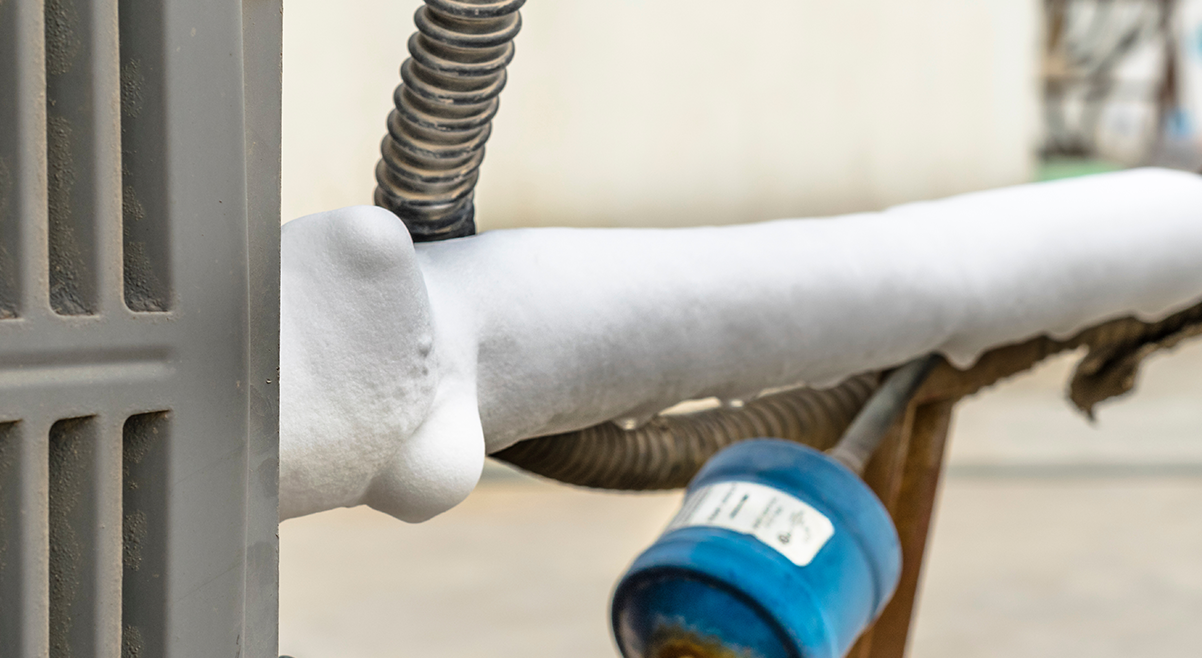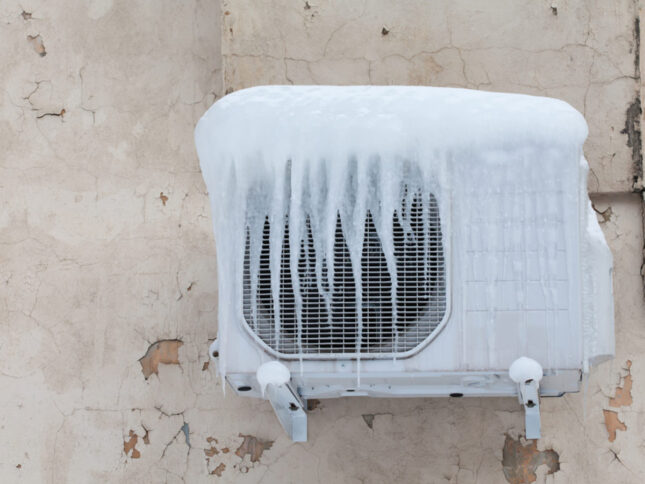My AC Pipe Is Frozen - What Do I Do? Instructions for Residents
My AC Pipe Is Frozen - What Do I Do? Instructions for Residents
Blog Article
The publisher is making a number of good pointers relating to How can I fix an air conditioner’s frozen pipe? in general in this content followed below.

Introduction
Discovering that your air conditioning pipeline is frozen can be concerning, particularly throughout hot summer months when you count on your air conditioning unit the most. Comprehending what to do in such a situation is important to stop more damage to your cooling system and ensure your comfort indoors.
Understanding the Causes
Several elements can add to the freezing of an a/c pipe. Comprehending these reasons can aid you address the concern successfully.
Absence of Airflow
One common reason for a frozen a/c pipeline is inadequate air flow. When the airflow over the evaporator coil is restricted, it can trigger the coil to go down below freezing temperature, bring about ice formation on the pipe.
Low Refrigerant Levels
Insufficient refrigerant degrees in your air conditioner system can likewise result in a frozen pipe. Low refrigerant degrees can cause the pressure in the system to drop, bring about the cold of wetness on the evaporator coil.
Winter Conditions
In colder environments, freezing temperature levels outside can contribute to the cold of a/c pipes. If your air conditioner system is not properly shielded or if there are leakages in the ductwork, chilly air can infiltrate the system, creating the pipe to ice up.
Dirty Air Filters
Dirty or clogged up air filters can restrict air movement in your a/c system, resulting in numerous issues, including a frozen pipe. It's necessary to change or clean your air filterings system on a regular basis to make sure proper air movement and prevent ice buildup.
Indicators of a Frozen Air Conditioning Pipe
Identifying the indicators of a frozen air conditioner pipeline is crucial for timely activity.
Reduced Airflow
If you observe a substantial decrease in air flow from your vents, it might show a frozen pipeline.
Ice Buildup on the Pipe
Noticeable ice buildup on the refrigerant line or the evaporator coil is a clear indicator of an icy AC pipe.
Odd Sounds from the Unit
Uncommon audios, such as hissing or bubbling, originating from your air conditioner device can signal that there's ice present on the pipe.
Immediate Actions to Take
When confronted with an icy air conditioner pipe, it's necessary to act swiftly to prevent further damage to your cooling system.
Shutting off the air conditioner
The first step is to turn off your ac unit to prevent the system from running and exacerbating the issue.
Looking for Blockages
Evaluate the area around the indoor device for any kind of obstructions that may be obstructing airflow, such as furnishings or drapes.
Defrosting the Pipe
You can utilize mild techniques like positioning towels taken in cozy water around the frozen pipe to assist thaw it slowly.
Preventive Measures
Taking preventive measures can assist avoid future occurrences of a frozen AC pipeline.
Normal Maintenance Checks
Set up regular upkeep checks with a professional HVAC technician to ensure that your AC system is running efficiently.
Transforming Air Filters
On a regular basis change or clean your air filters to prevent airflow restrictions and maintain optimum efficiency.
Protecting Exposed Pipes
If your air conditioning pipes are subjected to chilly temperature levels, think about protecting them to avoid freezing throughout cold weather.
Looking For Professional Help
If DIY techniques fail to fix the problem or if you're unsure concerning exactly how to proceed, it's best to look for help from a qualified HVAC technician.
When DIY Methods Fail
If your efforts to thaw the pipeline or address other issues are unsuccessful, it's time to call in a specialist.
Value of Hiring a Professional HVAC Technician
A licensed HVAC specialist has the competence and tools necessary to detect and fix concerns with your air conditioning system safely and effectively.
Verdict
Taking care of a frozen air conditioning pipeline can be a discouraging experience, yet understanding how to react can aid lessen damage and restore comfort to your home. By understanding the causes, recognizing the indications, and taking punctual action, you can properly address the problem and prevent future incidents.
Frozen AC Line: Why It Happens & What To Do About It
A frozen AC line can be a rather peculiar sight in a place like Phoenix, Arizona where nothing ever freezes. In this post, we’ll discuss what makes an air conditioner line frozen – and what you can do about it.
Dirty Air Filters
Did you know that you should be cleaning or replacing your air filters on a monthly basis? Failing to do this can result in airflow issues that, in turn, cause your evaporator coils and lines to freeze over. You’ll notice a buildup of ice on both components, although the buildup on your pipes will, of course, be more evident unless you open your air condition up to reveal the coils.
What To Do About It
Give your air filter a good cleaning if it’s reusable. If not, replace the filter outright. Next, switch your air conditioner’s fan setting on and leave it there for 2-3 hours. This will draw warm air in, helping to thaw your evaporator coil. You can also check out this article for some tips on cleaning the coils themselves if you’d like to speed the process up. Before you switch the unit back to its normal state, make sure the supply vents are completely unobstructed and free of dust or other debris.
If you keep having this issue even after replacing your filters regularly, contact a local HVAC repair company and have them inspect your evaporator coil, ductwork, and any other components that may be at fault. If you live in the Phoenix, Arizona area, give American Home Water and Air a call.
Low Refrigerant Levels/Leakage
What To Do About It
Contrary to what air conditioner “recharge” companies often tell their clients about refrigerant, it should never need to be simply refilled. You see, refrigerant runs in what experts refer to as a “closed loop.” Refrigerant really shouldn’t be leaving that loop. If it is, you’ve got a leak.
Paying someone to come and pump more refrigerant into your system (aka “recharge” it) isn’t the solution. Doing that will simply kick the can down the road. Besides, refrigerant leaks can be harmful to the environment and people in your home.
Rather, you need to take care of the leak with the help of a technician. Check out this article for some more information about dealing with air conditioners that are leaking refrigerant. Before you contact a technician, switch your thermostat to the off position. Then, switch the fan setting on and let it run for 2-3 hours so the unit can thaw.
Improper Temperature Setting
Improper temperature settings can also cause a drop in your air conditioner’s pressure. What many people don’t realize is that air conditioners are actually designed to run when temperatures have fallen above roughly 60 degrees Fahrenheit. If you run the unit when it’s cold outside, you’ll run into many issues, including frozen components.

As an avid reader about What Causes AC Pipes To Freeze?, I figured sharing that post was a great idea. In case you appreciated our post plz remember to pass it around. Bless you for your time. Visit us again soon.
This Site Report this page